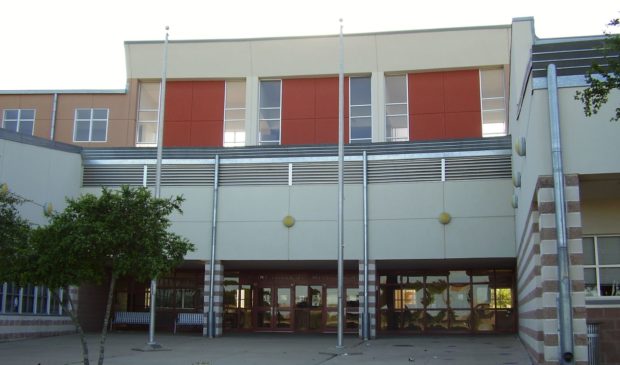AISD postpones potential bond
Thursday, September 22, 2016 by
Courtney Griffin On Monday, the Austin Independent School District board of trustees decided to pump the brakes on future bonding efforts for district schools for another year.
At the board’s workshop meeting, trustees met with the Facilities and Bond Planning Advisory Committee to discuss potential bond efforts that would be used for the district’s current and future facility needs. After committee members warned that a planned May 2017 bond proposal would be rushed, trustees decided to postpone any AISD bond initiatives until November 2017.
The advisory committee is a district subcommittee made up of 18 board-appointed volunteers who offer recommendations on long-range facilities planning. Subcommittee members recommended that the board postpone a May 2017 bond initiative until the district’s facilities master plan could be updated. Members said finishing that master plan would enable AISD to present a highly detailed plan to district residents and hopefully gather more support for a potential bond.
Essentially, the anticipated master plan is a steering document that takes into account variables related to several areas, including building techniques, health assessments of current AISD buildings, distribution of academic programming and shifts in demographics. Subcommittee members incorporate these and other variables to better plan for current and future AISD facilities. Advisory committee members expect to complete the updated facilities master plan in March.
“Everyone wants to do right by their neighborhoods, their districts, their communities. We have immediate needs, no doubt – overcrowding, safety, technology. They come up in conversation frequently,” explained advisory committee member Dusty Harshman, noting the urgency with which AISD’s facilities need updating. “Yet, we’ve been considering prudence.”
AISD’s last facilities master plan, a 144-page document finished in 2014, was passed after voters approved a May 2013 $489.7 million bond to support technology, transportation and energy conservation as well as to address critical renovations and improvements at facilities across the district. At Monday’s meeting, several trustees admitted that some board members felt the effort was “rushed” when the 2013 bond was proposed.
“I’m very much in favor of a November 2017 bond as opposed to a May 2017 bond,” said District 3 Trustee Ann Teich. “AISD staff can’t get out and advocate for a bond. We have to do a political action committee. So right there, that gives me pause. … Also, when you have a stand-alone bond election (in May 2017), it really just stands out like a red flag to the public.”
Teich said a pressed planning process, a stand-alone bond proposal and an already bond-fatigued public were a recipe for failure, especially given the city’s transportation bond coming up on this November’s ballot as well.
At-Large Trustee Gina Hinojosa agreed, explaining that the Austin Neighborhoods Council was strongly considering opposing the city’s transportation bond because it was too hastily put together.
While board Vice President Paul Saldaña supported the extended timeline, he also warned staff about the importance of AISD’s timing relative to city and county bond efforts.
Saldaña, District 1 Trustee Edmund Gordon and District 4 Trustee Julie Cowan all pointed out that school facilities in their districts drastically need tending and asked how AISD staff was going to communicate this delay to the public. The average AISD school is 40 years old, but Saldaña pointed out that there are some that are more than 100.
Chief Financial Officer Nicole Conley said the overall bond-to-construction process might speed up because of a new construction method AISD will employ, known as design-build. The method allows AISD staff to work prior to bond approval, identify potential facilities that need work and continue the flow-of-work through a single contractor to enable quicker project turnaround.
In addition, advisory committee members said that despite urgent problems – such as Bowie High School’s overcrowding, under-enrollment issues at Crockett High School, safety initiatives at the now traffic-congested Burnet Middle School or the many outdated facilities — the facilities master plan enables the extreme detail needed to create accurate cost estimates and a more equitable approach to education. Harshman explained that to ensure equitable distribution of bond funds — another issue that has traditionally drawn criticism — the committee had divided the district into regional clusters and was prioritizing projects with respect to them.
However, Gordon asked staff to ensure that the regional clusters do not fall along historically regional lines.
“It might be a way for FABPAC to consider what kind of responsibilities our planning has in terms of breaking up some of the old clusters which have recapitulated the inequities in the city and school district for 80 – well 150, 200 years,” he said, referring to racial and socioeconomic discrimination.
Staff and committee members assured trustees that they would take another look at regional lines and would continue looking at potential boundary changes and all other measures to relieve overcrowding issues at AISD schools. Although, Harshman noted, needed facility updates went beyond overcrowding issues.
The advisory committee is scheduled to meet publicly on Saturday, Sept. 24, 9 a.m., at the Carruth Administration Building to continue facility master plan discussions.
Photo by WhisperToMe made available via Wikimedia Commons.
The Austin Monitor’s work is made possible by donations from the community. Though our reporting covers donors from time to time, we are careful to keep business and editorial efforts separate while maintaining transparency. A complete list of donors is available here, and our code of ethics is explained here.
You're a community leader
And we’re honored you look to us for serious, in-depth news. You know a strong community needs local and dedicated watchdog reporting. We’re here for you and that won’t change. Now will you take the powerful next step and support our nonprofit news organization?










